Pawscessories is reader-supported. When you buy via links on our site, we may earn an affiliate commission at no cost to you.
Learn more.
The Great Dane Doberman mix, also known as the Doberdane, is a cross between two of the most popular dog breeds in the world.
This hybrid dog is quickly becoming a favorite among pet owners for its great looks and sweet temperament.
This post will take a closer look at this amazing breed and answer some of people’s most common questions about them.
Let’s dive in.
Table of Contents
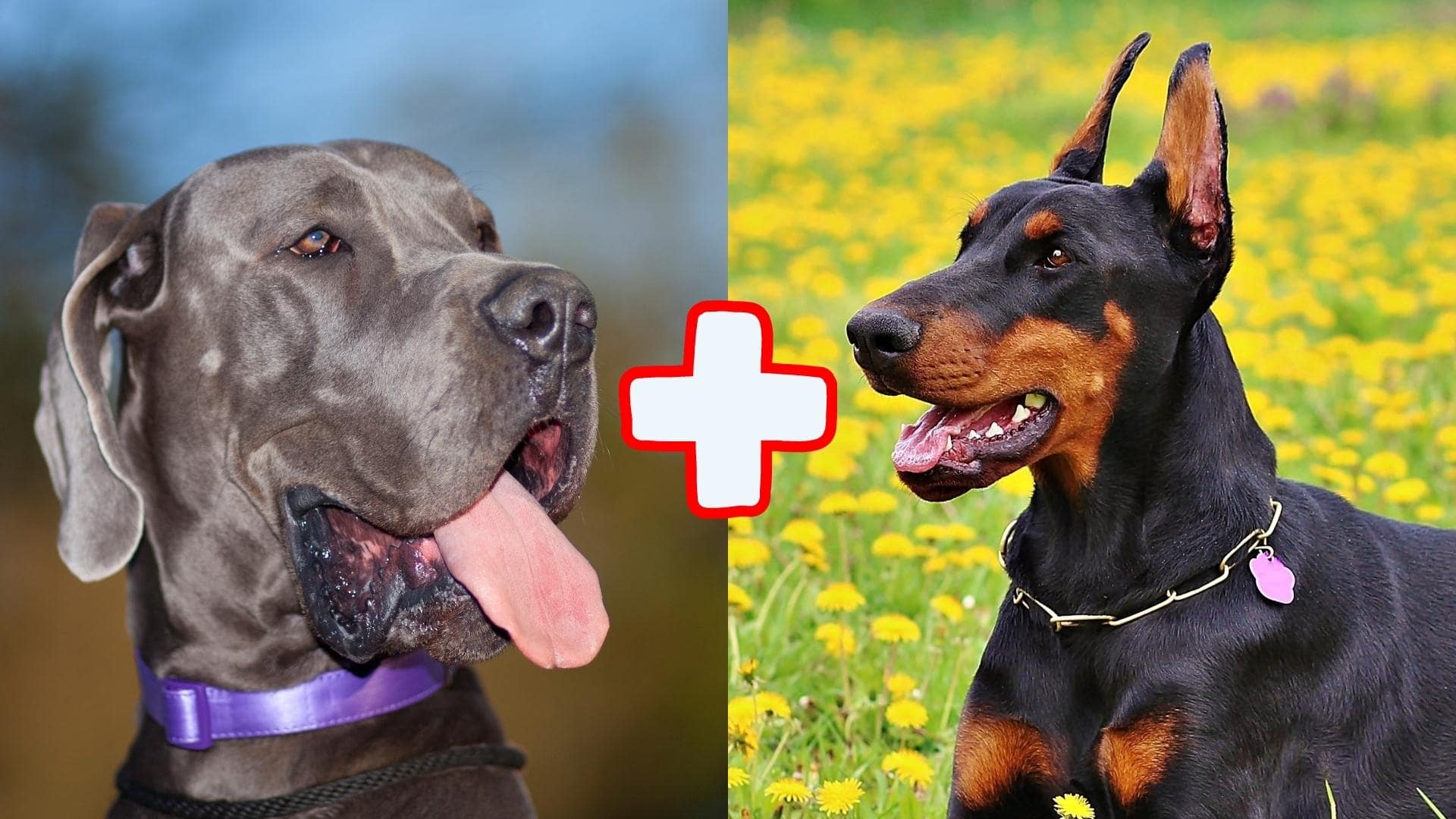
What Is A Doberdane?
The Doberdane the Great Dane and the Doberman Pinscher. These dogs are relatively new to the scene. Still, they have gained a lot of popularity thanks to their great looks and sweet dispositions.
Doberdanes are crossbreed that takes qualities from both their parents. Depending on which parent is more dominant, the puppies can inherit more physical characteristics and personality traits from one parent over the other.
History Of The Great Dane Doberman Mix
To understand the Doberdane, we need to look at the history of both parents.
Great Dane History
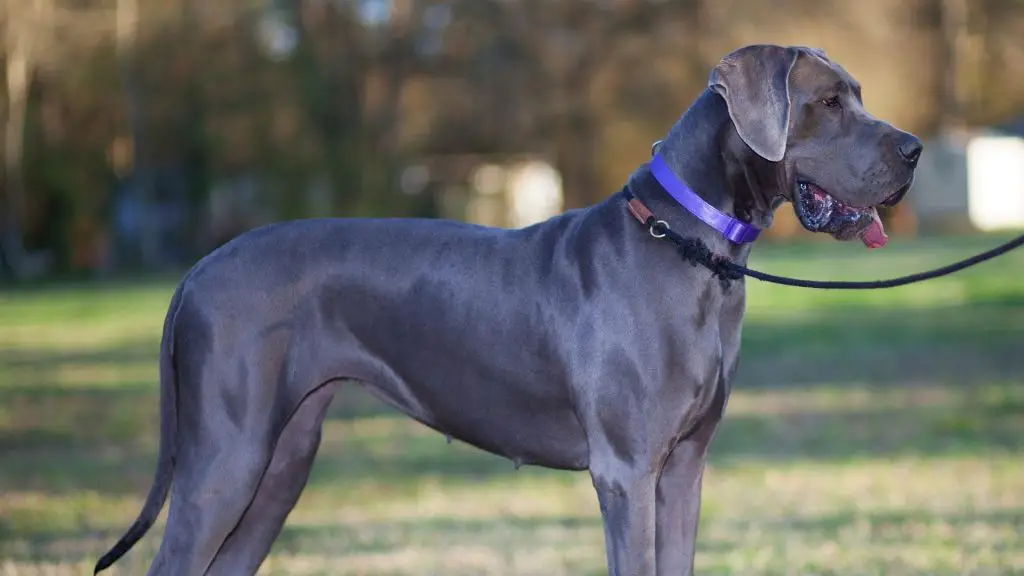
The Great Dane is a large, short-haired dog that originated in Germany. They are also known as the Deutsche Dogge or German Mastiff.
The Great Dane is one of the tallest dogs and is frequently used as a working dog or companion animal.
Great Danes were initially bred for hunting purposes and often used to track down boar and deer.
Over time, the breed became popular among noblemen and royalty and was often given as gifts to dignitaries.
In addition, the Great Danes have a long history dating back to the early 1500s when they were written about in literature.
Today, the Great Dane is one of the most popular breeds in the United States, and it has been featured in many films and television shows. Despite its imposing size, the Great Dane is typically gentle and good-natured, making it an ideal pet for families.
Doberman History
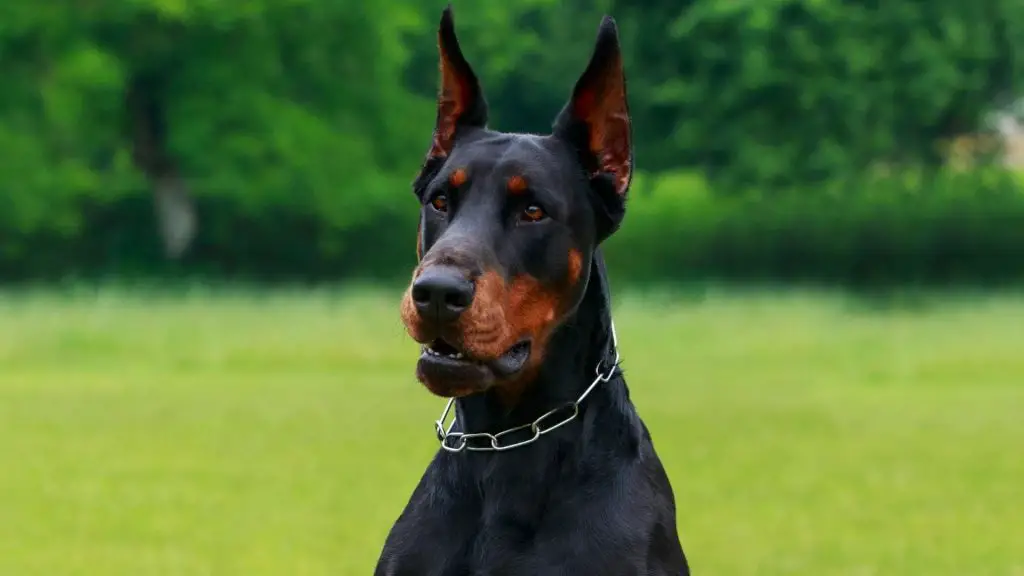
The Doberman Pinscher is a medium-sized, short-haired breed of dog that originated in Germany.
Dobermans were originally bred as working dogs and are still used today for law enforcement and military work.
In addition, they make excellent guard dogs and loyal companions.
Dobermans were first developed in the late 1800s by a man named Louis Dobermann.
He wanted to create a breed that was intelligent, fearless, and loyal. To do this, he mixed several different breeds, including the German Pinscher, Rottweiler, Greyhound, and Weimaraner.
The resulting breed was named the Doberman Pinscher and quickly became famous for its intelligence, loyalty, and guarding abilities.
Dobermans are still popular and frequently used as working dogs or companion animals.
Where Does The Great Dane Doberman Mix Come From?
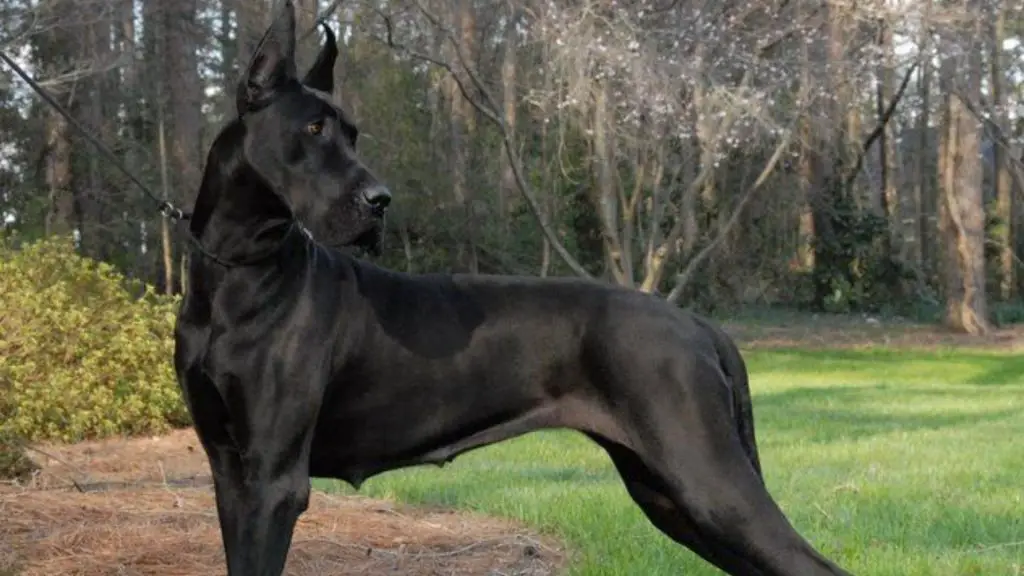
The Great Dane Doberman mix is a hybrid dog created by crossing a Great Dane with a Doberman pinscher.
This designer breed was first introduced to the U.S.A in the early 2000s and has grown in popularity since.
Doberdanes are still relatively rare, but they are slowly becoming more well-known as people learn about this amazing breed.
What Was The Great Dane Doberman Mix Bred For?
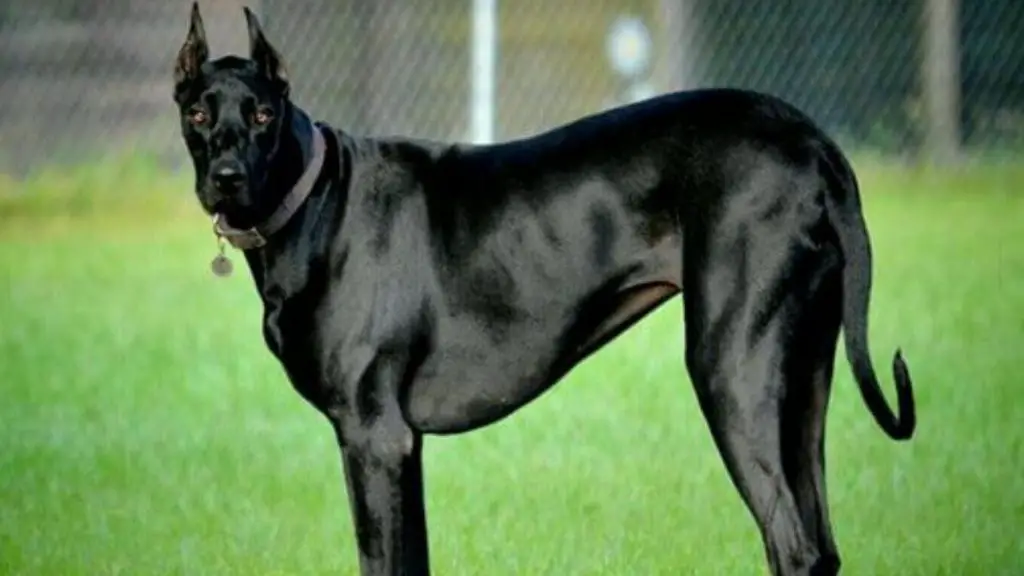
The Great Dane Doberman mix was bred to create a loyal, protective, and family-friendly companion.
Great Danes and Doberman Pinschers became popular family pets in the early 2000s, and breeders wanted to create a dog with the best qualities of both breeds.
The Great Dane and Doberman both have a reputation for being loyal, protective, and great with children.
The Doberdane was created with the intention of being the perfect companion. This hybrid dog takes the best qualities from both parent breeds and is an excellent choice for families and active households.
So now you know the history of the Great Dane x Doberman cross and that of its parent breeds.
Let’s look at the physical characteristics, size, colors, and temperament of the Doberdane.
Quick Summary Table Of The Doberdane
| Price | $1000 – $2000 |
| Height | 28 – 35 inches. |
| Weight | 90 – 140 pounds. |
| Colors | Brown, red, black, fawn, brindle. |
| Lifespan | 8 – 10 years. |
| Shedding | Low shedding with minimal grooming needed. |
| Trainability | Relatively easy to train. |
| Activity Level | Moderately active. Requires 60 minutes of daily exercise. |
| Temperament | Protective, smart, gentle, affectionate, friendly, calm, loyal, reserved. |
| Best Households | Active households, families, and people with prior canine experience. |
Doberdane Appearance & Build
The Great Dane Doberman mix is large and muscular.
The Doberman Great Dane mix typically has the head and body of a Great Dane with the legs and tail of a Doberman Pinscher.
Doberdanes usually inherit the short, smooth coat of the Doberman Pinscher, but they can also have the longer coat of the Great Dane.
However, as with all cross breeds, their appearance and build come down to which parent they take after most.
So there can be a variety of appearances and builds. Here are three images of black Doberdanes:
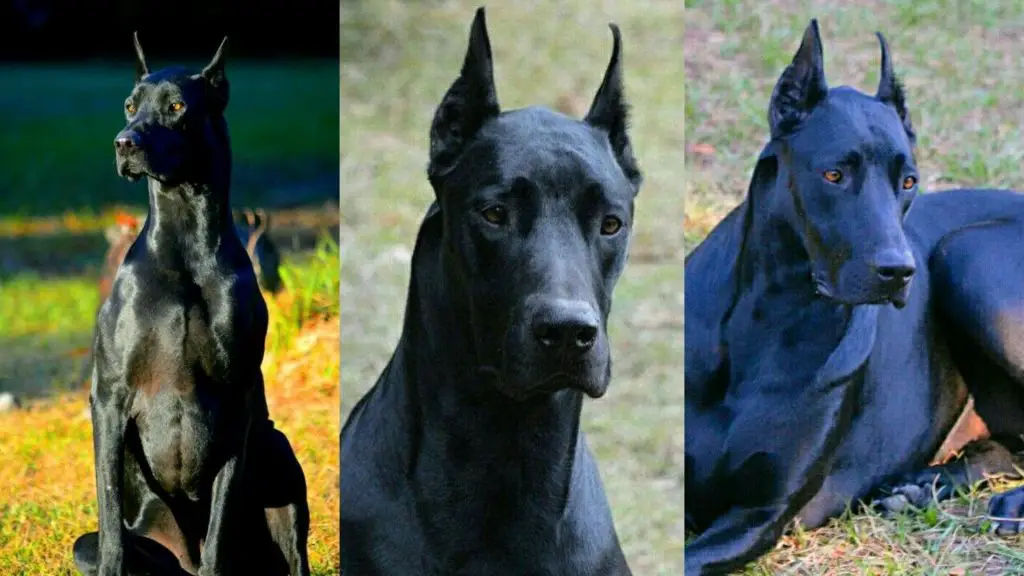
Doberdane Size (Weight & Height)
The Doberdane is a large breed of dog.
The average Doberdane weighs between 90 and 140 pounds, and the average height ranges from 28 and 35 inches tall.
However, some Doberdanes can be even larger. For example, the biggest Doberdane on record weighed an impressive 200 pounds!
It’s also important to note that female Doberdanes will fall on the smaller end of the spectrum while male Doberdanes will fall on the larger side.
Doberdanes are one of the largest breeds of dogs, and they are certainly not a breed for everyone.
Doberdane Coat Colors & Texture
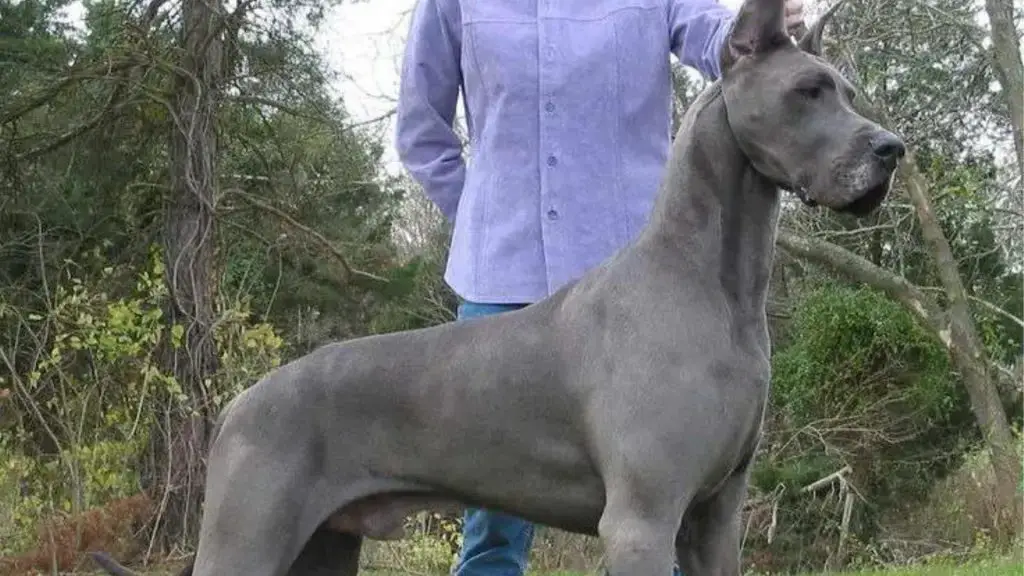
Doberdanes can come in various colors, but black, blue, fawn, and red are the most common.
Doberdanes can also have brindle markings or be merle.
The coat of a Doberdane is usually short and smooth like the Doberman Pinscher, but it can also be longer and rougher like the Great Dane.
Doberdanes typically have a black mask on their face and may or may not have white markings on their chest.
Doberdane Shedding & Grooming
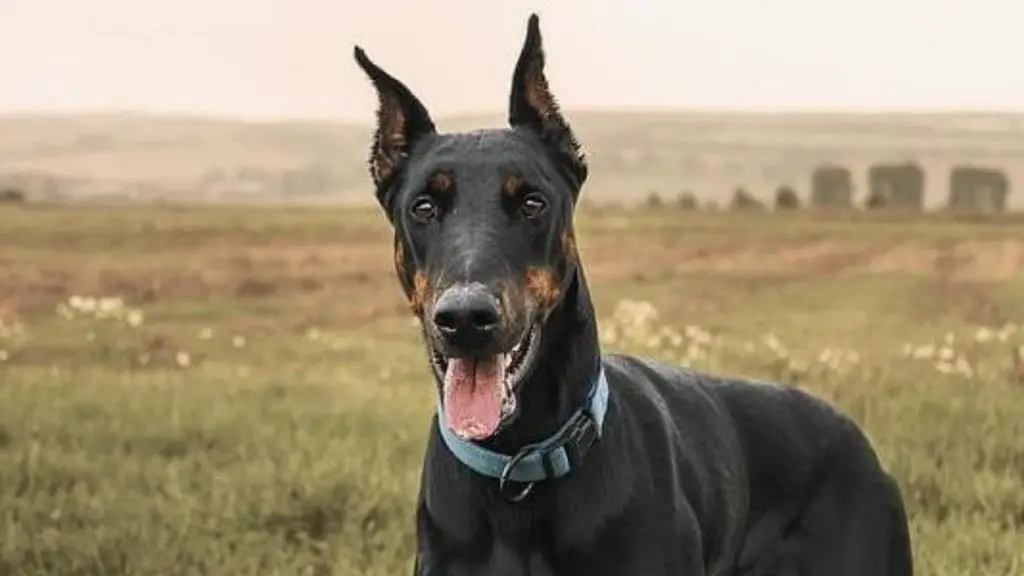
The answer is yes if you’re wondering if a Doberman Great Dane mix sheds.
All Doberdanes will shed at least some, but those with a longer coat will shed more.
Doberdanes are considered moderate shedders, so you can expect to find hair around your home.
However, regular brushing can help to minimize the amount of shedding.
Many parents of this breed opt to get a robot vacuum to help them stay on top of the shedding. Since their hair is short, it’s not always noticeable by the naked eye. That is where the robot vacuum is quite handy.
In terms of their maintenance, the Doberdane is relatively easy to maintain.
They rarely need bathing and can get away with whipping them down with a damp cloth or sponge. Doberdanes only need bathing when visibly dirty or have rolled in something stinky.
When it comes to nail trimming, ear cleaning, and teeth cleaning, they require the same amount of maintenance as other dogs.
Are Doberdanes Hypoallergenic?
Both the Great Dane and Doberman are not hypoallergenic, meaning the Doberdane is not either.
This is important to note for those with dog allergies.
While there’s no such thing as a 100% hypoallergenic dog, some breeds are better for people with allergies.
Some popular hypoallergenic breeds include the Poodle, Bichon Frise, and Maltese.
While the Doberdane does shed, it’s not nearly as much as other dogs. But it’s still enough to set off allergies.
If you have allergies but still want to get a Doberdane, there are some things you can do to make it work.
First, ensure you’re not allergic to either parent breed. Second, consider getting a hypoallergenic dog shampoo and using it when you bathe your Doberdane.
Lastly, some allergy shots can help make people less allergic to dogs.
Doberdane Ears & Tail
The Doberdane can have erect or floppy ears and a long tail that is often docked.
Since the Doberman’s ears are usually cropped to meet show standards, breeders are likely to do the same with some Doberdane pups.
Tail docking and ear cropping involve removing part of the tail or ears for cosmetic and practical reasons.
Some people believe that docking and ear cropping makes dogs look more aggressive, but it’s actually done to prevent injuries.
The long tails of Doberdanes can easily get stepped on or caught in doors, which can lead to severe injuries.
With ear cropping, the goal is to make the ears stand up, so they’re less likely to get injured in a fight.
Docking and ear cropping are controversial practices and banned in some countries.
So depending on the breeder and where the Doberdane came from will determine if it has a docked tail and cropped or floppy ears.
Here is a Doberdane with floppy ears versus cropped ears:

Doberdane Eye Color
The Doberman pinscher has eyes ranging from light brown to almost black, and the Great Dane can have eyes that are blue, brown, or hazel.
This means that Doberdanes can have any of these colors for their eyes.
Many people believe that the darker, the better when it comes to eye color for dogs, but this is not always the case.
So Doberdanes can have eyes ranging from light brown to almost black, blue, brown, or hazel.
Of course, there is also the possibility of gene mutations that can result in Doberdanes having two different colored eyes, called heterochromia.
Doberdane Lifespan
The Great Dane has an average lifespan of around seven to ten years, and the Doberman pinscher typically lives for about nine to thirteen years.
When it comes to the Doberman Great Dane mix, they have an expected lifespan that falls somewhere in the middle of their parent breeds.
You can expect your Doberdane to live 8 to 10 years. Some people have even reported their Doberdanes living longer than 11 years.
So with proper care and a good diet, your Doberdane can have a long and happy life.
Doberdanes Common Health Issues
Regarding health issues, a mixed breed like the Doberdane inherits some of its parent breeds’ health issues.
Since the Doberdane is made up of two large breed dogs, they are more susceptible to certain health problems.
Here are the most common health issues for Doberdanes:
Joint issues
Hip and elbow dysplasia are two of the most common joint issues in large dogs.
These conditions are caused by a malformation of the joints and can be very painful for dogs.
Doberman pinschers are particularly prone to hip dysplasia, while Great Danes are more likely to suffer from elbow dysplasia.
Both of these conditions can be expensive to treat, so it’s essential to be aware of them if you’re considering getting a Doberdane.
Heart problems
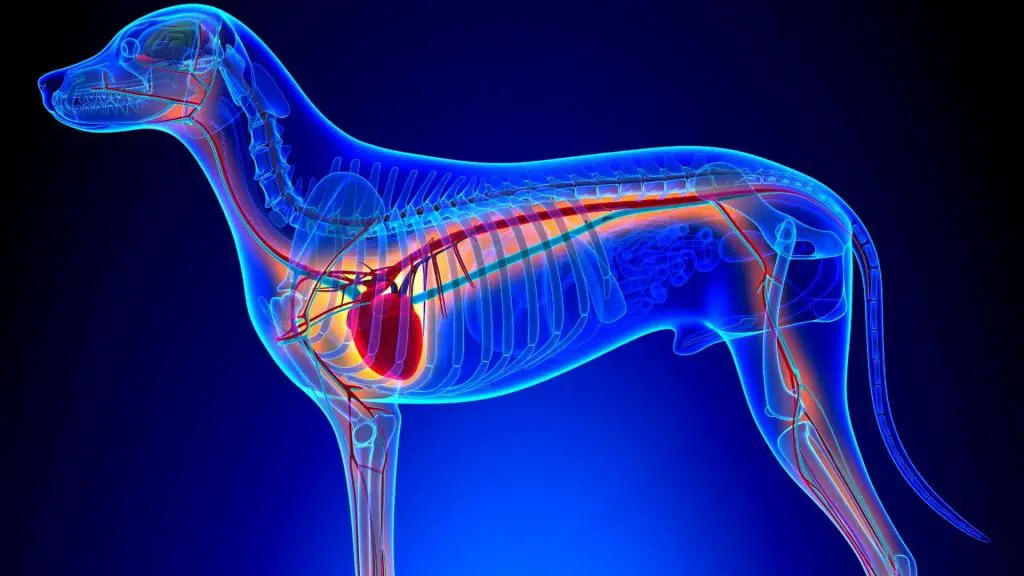
One of the most common health problems in Great Danes is dilated cardiomyopathy. This is a condition that weakens the heart muscle.
Doberman pinschers are also susceptible to heart problems, particularly arrhythmias.
While there is no guarantee that a Doberdane will suffer from any of these conditions, it’s essential to be aware of them.
Any heart issues that Great Danes or Dobermans are susceptible to can be passed down to the Doberdane.
Bloat
For a large dog like the Great Dane, bloat is a serious concern.
Bloat occurs when the stomach fills with gas and then twists, which can cut off blood supply to the stomach and cause organ damage.
Dobermans are also prone to this condition, so the Doberdane will also be at risk for bloat.
Bloat usually occurs after a large meal or exercise. This is why many pet care experts advise dog owners not to let their dogs play right after eating.
Von Willebrand’s Disease
Von Willebrand’s disease is a blood disorder that prevents the blood from clotting properly.
Dobermans are particularly prone to this condition, which can be passed down to Doberdane puppies.
If your dog has von Willebrand’s disease, they may need medication for the rest of their life.
Cancer
Cancer is unfortunately all too common in dogs, and Great Danes are particularly susceptible to certain types of cancer.
Dobermans can also be affected by cancer, so the Doberdane will have an increased risk.
There are many different types of cancer that dogs can get, so it’s important to be aware of the signs and symptoms.
Some examples include:
- Lymphoma
- Hemangiosarcoma
- Osteosarcoma
- Mast Cell Tumors
While there is no guaranteed way to prevent cancer in dogs, it’s important to take steps to keep them healthy.
Doberdanes Trainability & Intelligence
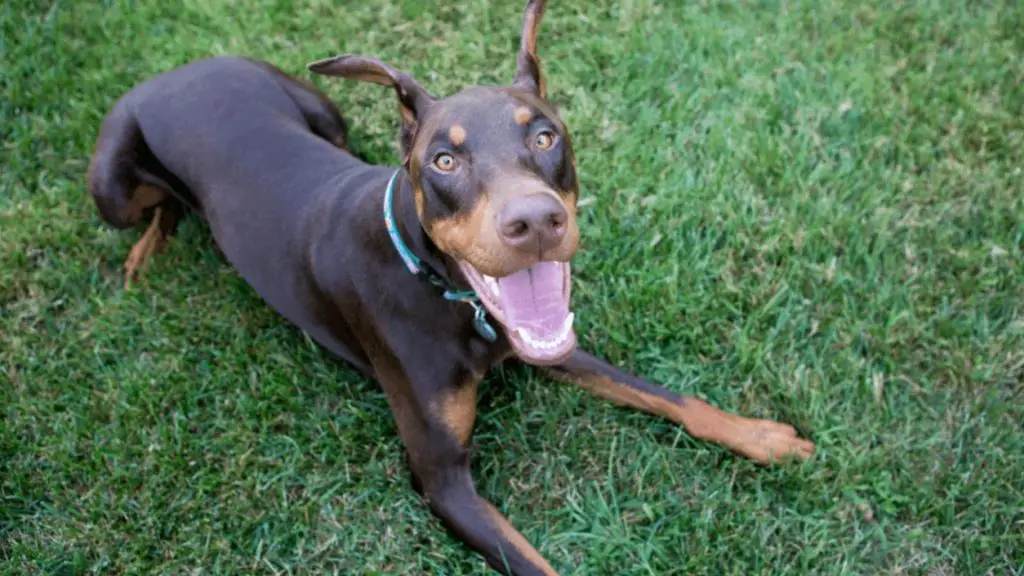
The Great Dane is a very intelligent breed, and the Doberman is also known for being quick to learn.
When it comes to the Doberdane, they will inherit some of their parent breeds’ intelligence.
This means that they will be relatively easy to train, as long as you use positive reinforcement methods.
Like all dogs, the Doberdane will need early socialization and obedience training.
This will help them to grow into well-rounded adults who are good around other people and animals.
Are Doberman Great Dane Mixes easy to train?
The Great Dane Doberman mix is a brilliant breed and relatively easy to train.
Like all dogs, their training will need structure and consistency for them to thrive.
Early socialization and obedience training are also crucial for Doberdanes, as it will help them grow and develop positive habits.
Doberdanes Activity Level & Exercise Needs
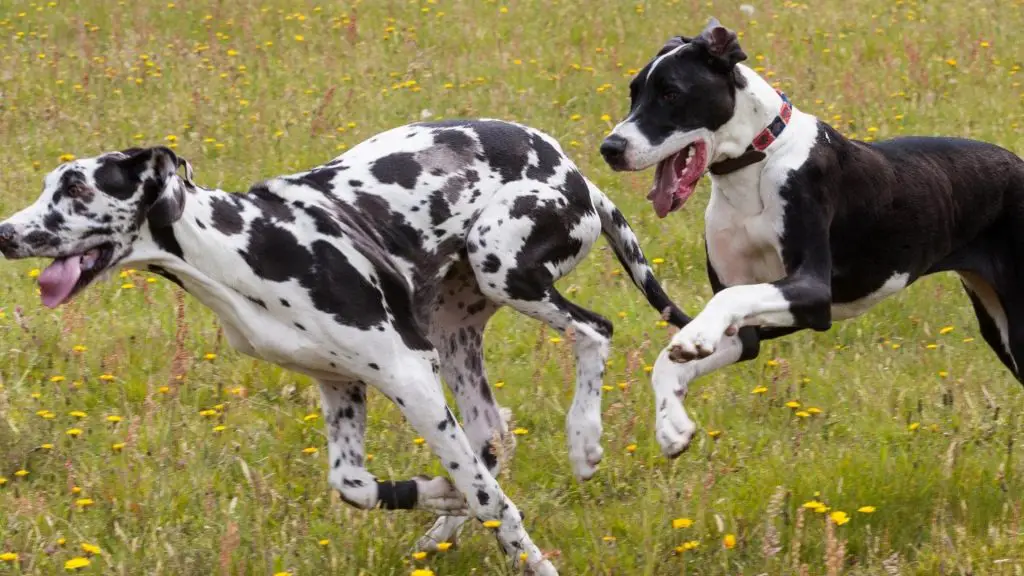
The Great Dane is a relatively calm breed, while the Doberman is known for being energetic and lively.
When it comes to the Doberdane, they will inherit some of both parent breeds’ energy levels.
This means they will need plenty of exercise, but they won’t be quite as high-energy as a purebred Doberman.
Depending on which parent they take after more, they may need more or less exercise.
They are considered active dogs and need at least 60 minutes of exercise daily, though more is always better.
Make sure to give them plenty of stimulating toys and puzzles to keep their minds occupied.
Doberdanes Temperament & Behavior
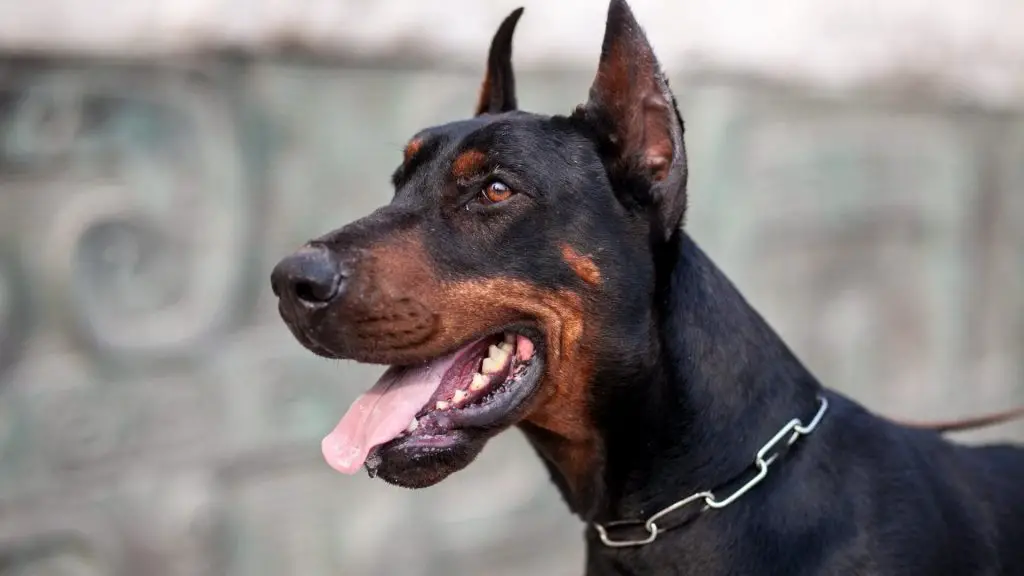
Great Danes are known for being friendly, gentle, and eager to please. On the other hand, the Dobermans are often considered to be alert, loyal, and confident.
Combine these two breeds together, and you have an intelligent, loving dog eager to please.
The Doberdane is a great family pet, as they are loving and affectionate with those they know and trust.
They can be reserved around strangers but are not aggressive or territorial.
A Doberman pinscher mix like the Doberdane can be a great service dog when adequately trained. They have the temperament and demeanor to be great service animals and assistance dogs.
Here are some common descriptions of the Doberdane temperament:
- Friendly
- Loving
- Loyal
- Playful
- Smart
- Gentle
- Confident
Do Doberdanes Bark A Lot?
The Great Dane Doberman mix is not a particularly vocal breed. They may bark when someone strange comes to the door, but they are not known for being yappy dogs.
That said, every dog is different; some may bark more than others.
Great Danes are not known as barkers, but Dobermans tend to bark more than other breeds.
So it depends on which parent your Doberdane takes after more in this department.
Regardless, a Doberdane can be easily trained to prevent excessive barking.
Do Doberdanes Make Good Gaurd Dogs?
Yes, Doberdanes can make great guard dogs.
While they are not naturally aggressive or territorial, they will protect their family if they feel threatened.
Their size alone is enough to intimidate most intruders, and their deep bark will alert you to any potential danger.
However, they are not attack dogs, but their size and presence are usually enough to deter any would-be criminals.
Of course, they will need proper training to be an effective guard dog.
Without training, they may be too friendly and welcoming to strangers.
Do Doberdanes Like To Cuddle?
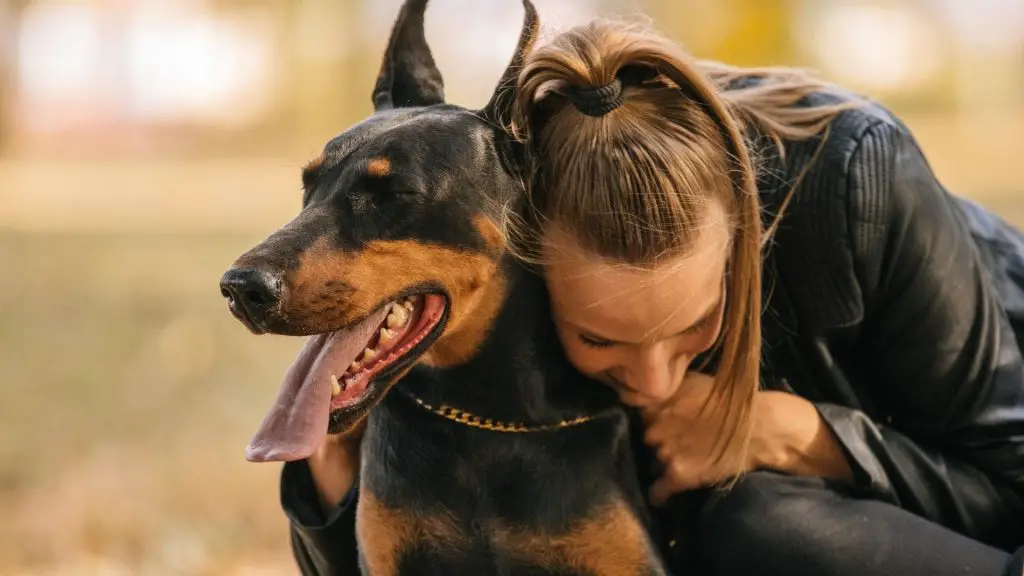
The Great Dane Doberman mix is a very affectionate dog that loves to cuddle with their family.
They take after their Great Dane parent because they are gentle giants that enjoy being close to those they love.
They will attempt to be lap dogs and often want to sit in your lap or lie next to you on the couch.
Their size can make this difficult, but they will try their best to cuddle up as close as possible.
Are Doberdanes Good With Kids?
Doberdanes are great family pets and do well with children of all ages.
They are gentle and loving but also playful and silly.
Your Doberdane will quickly become your child’s best friend and have hours of fun playing together.
Supervising young children around a dog this size is important, as even the most gentle dogs can accidentally knock over a small child.
Children should be taught how to appropriately interact with dogs, and the Doberdane is a great breed to guide them with.
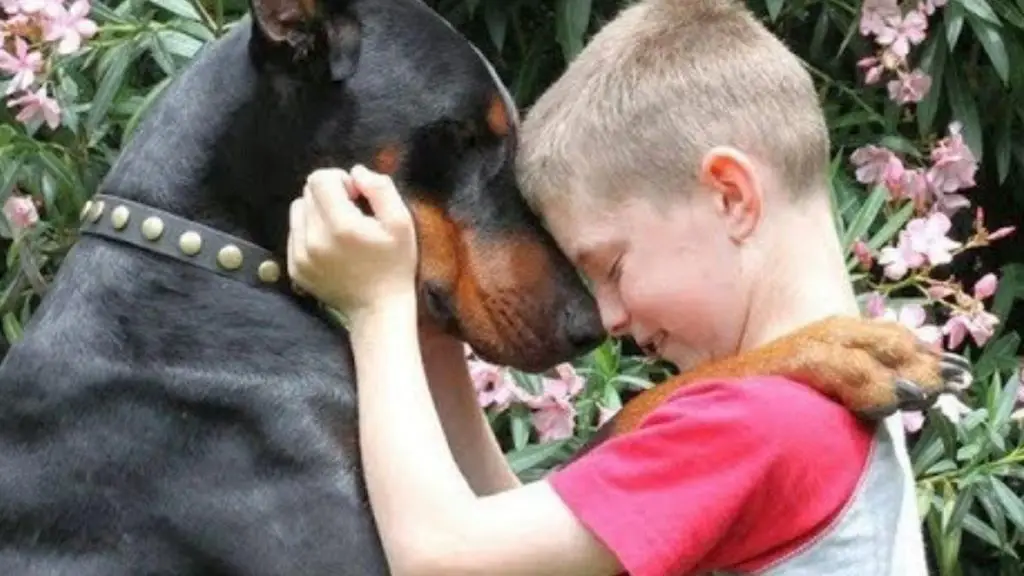
Are Doberdanes Good With Other Dogs?
Doberdanes are generally good with other dogs, but it is always best to introduce them slowly and supervise their interactions.
As with any large breed dog, they may try to assert their dominance over smaller dogs.
This is especially true for male Doberdanes meeting other male dogs. They can be aggressive towards other male dogs outside of their family if they consider them a threat.
They take after their Doberman parent in this regard.
If you have another dog at home, make sure to properly socialize your Doberdane from a young age so they can learn to get along with other dogs.
Doberdanes do best in households where they are the only dog. Still, they can coexist peacefully with other dogs if properly introduced and socialized.
Are Doberdanes Good With Strangers?
Doberdanes are not naturally aggressive or territorial, but they will protect their family if they feel threatened.
Depending on their upbringing, they may either be friendly or aloof with strangers.
Proper socialization is vital to ensure that your Doberdane is comfortable around strangers.
You should introduce them to as many new people, places, and experiences as possible so they can learn to trust and be comfortable around new people.
Are Doberdanes Good Apartment Dogs?
Yes, Doberdanes can actually be good apartment dogs.
Great Danes are actually one of the best breeds for apartment living. They are calm, quiet, and easily trained, so they are unlikely to cause problems with neighbors.
Conversely, Dobermans can also do well in apartments when adequately exercised. However, a Doberman not given enough exercise can become destructive and bark excessively.
So a Doberman Great Dane mix takes some of these traits from each parent breed.
The key is proper training and exercising a Doberdane to meet their needs. If you can do that, they can make great apartment dogs.
Do Doberdanes Get Along With Cats And Small Pets?
Doberdanes can get along with cats and small pets if they are properly introduced at a young age and socialized.
They can have a high prey drive due to their Doberman parent, so they may chase after smaller animals if they are not used to them.
They can learn to live peacefully with other animals with proper training and socialization.
Great Dane Doberman Mix Food & Diet
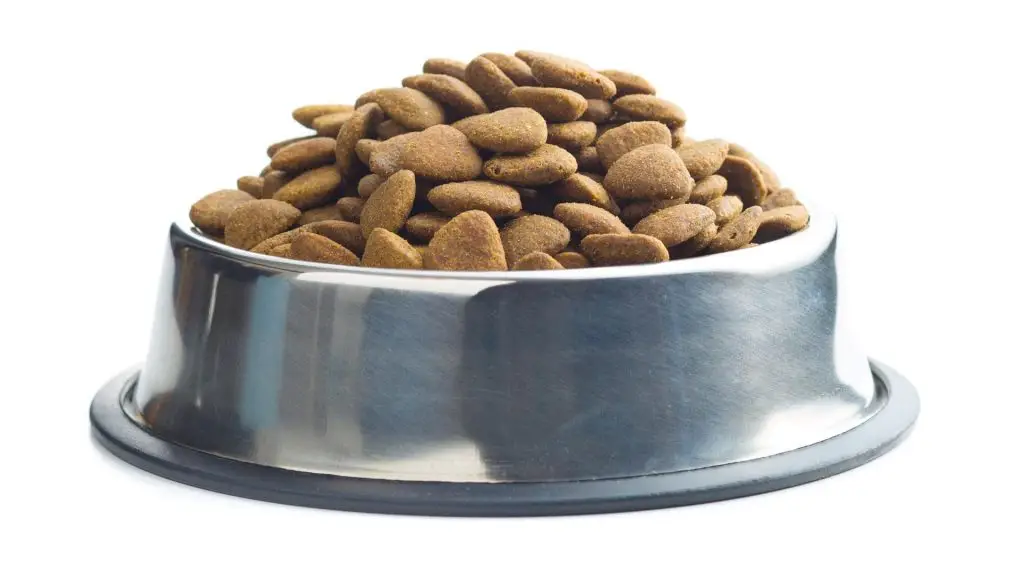
Regarding dog food, the Doberman Great Dane mix requires a high-quality diet full of protein.
This dog is a large breed and will need about two to three cups of food per day, split into two meals.
Of course, this depends on their age, activity level, and other factors.
You should always consult your veterinarian to determine the best diet for your dog.
The best food for this mix is a dry kibble made specifically for large breeds. It’s the cheapest option and can give your dog all the nutrients they need.
Make sure to avoid foods high in fat or empty calories as this can cause your dog to become overweight.
My father, Dr. Littlejohn, and our head veterinary consultant recommend these four brands above all else:
Stick to food that’s specific for large dog breeds.
Further Readings: 7 Simple Steps To Feeding Your Puppy (#4 Is Crucial)
Why Get A Great Dane Doberman Mix?
The Great Dane Doberman mix is a great breed for those looking for a loyal and loving family companion.
They are great with children and other animals and make great apartment dogs if properly exercised.
The Doberdane is a dog best fit for active families or individuals who can provide the necessary exercise.
Here are some of the pros and cons of this breed:
Pros
- Loyal and loving
- Great with children and other animals
- Can be a great guard dog
- Cuddly and affectionate
- Very trainable and quick to learn
Cons
- Drools excessively
- Requires a lot of exercise and training
- It can be a challenge for first-time owners
- Don’t do great being left alone for a long period of time
Great Dane Doberman Mix Price?
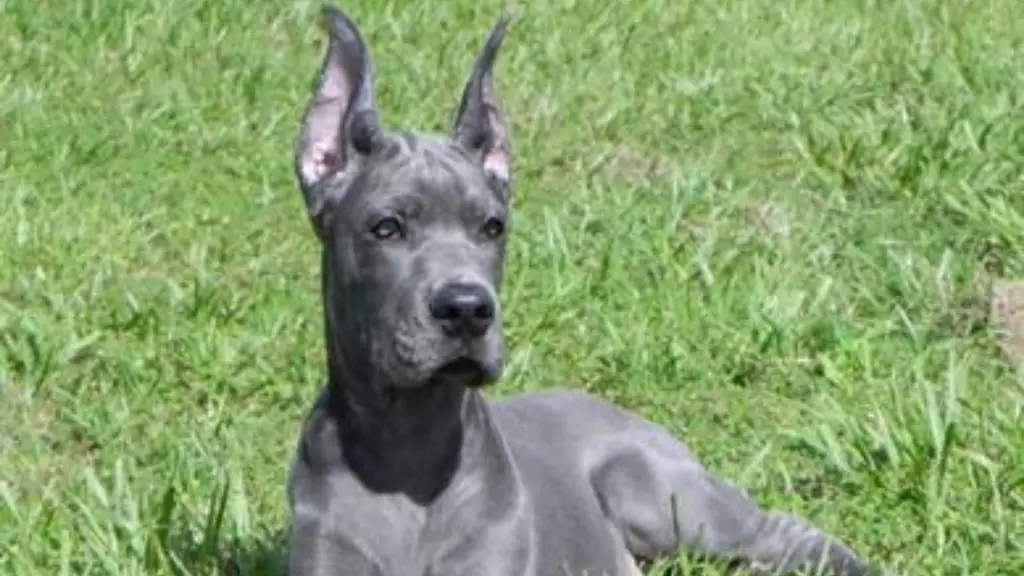
A Great Dane puppy costs between $1000 to $1500 on average, and a Doberman puppy costs between $1000 to $2500 on average.
Great Dane Doberman mix puppies cost a little less than their purebred parents. A doberdane puppy can cost between $1000 to $2000 on average.
The Doberdane puppies will range in price based on serval factors, including the breeder, coat color, eye color, and more.
The Great Dane Doberman mix is not a typical dog breed, so you may have to do some searching to find a reputable breeder.
When looking for a Great Dane Doberman mix puppy, make sure to do your research on the breeder.
You want to ensure they are reputable and have a good track record of healthy puppies.
If you find a Doberdane price to be extremely low, be careful. Unfortunately, there are many unscrupulous breeders out there who are looking to make a quick buck by selling sick or unhealthy puppies.
Where Can You Buy A Great Dane Doberman Mix?
The Great Dane Doberman mix is not a common dog breed, so you may have to do some searching to find a reputable breeder.
You can start your search by checking the American Kennel Club’s website or contacting the Doberman Pinscher Club of America.
Another great resource is the Great Dane Club of America.
These organizations can help connect you with responsible Great Dane Doberman mix breeders in your area.
Here are a few other options you can look into:
Final Thoughts
A hybrid breed like the Great Dane Doberman mix is not for everyone.
They require a lot of exercise, training, and attention.
But if you are up for the challenge, they can make great family companions.
Do your research before getting one, and be sure to find a reputable breeder.
And most importantly, make sure you are ready to commit to this breed for the long haul.
Other posts you might find interesting:
Great Dane Rottweiler Mix (AKA Weiler Dane): Breed Profile
